Last updated on February 29, 2024

Rattleclaw Mystic | Illustration by Tyler Jacobson
It’s morphin’ time!
Magic has a long history of different mechanics. Some are very memorable, and some definitely are not. Does anyone remember sweep?
Today I’m going to take you on a journey to explore one of my favorite mechanics in the game: morph. This mechanic is nearly two decades old and makes for some of the most exciting gameplay Magic has to offer. I’m going to explore how the mechanic works, how it played out in the game, and what are some of the best cards to ever feature the mechanic.
Ready? Let’s jump right in!
How Does Morph Work?

Kadena, Slinking Sorcerer | Illustration by Caio Monteiro
Morph comes in two parts: first you cast the creature face-down as a blank 2/2, and then you can pay the morph cast to flip it face-up.
Every card with morph gives you the option to cast it face-down as a creature spell for three mana. If you do this it’s a 2/2 creature with no name, abilities, colors, or any other attributes. You can turn a face-down morph card face-up at any time by paying the morph cost. Most morph cards are creatures, and a lot of them also have abilities that trigger when you turn them face-up.

Let’s take a look at Glacial Stalker as an example. This is a very simple card, just a vanilla 4/5 for six mana. Not very impressive by itself. But morph adds another dimension to it.
You can cast this face-down and then turn it face-up whenever you want by paying another five mana. This is also known as “morphing” a creature, or sometimes as “unmorphing” depending on which of the two parts you consider to be the actual morph. I’m going to use “morphing” to mean turning a face-down creature face-up for its morph cost.
Doing this gives you a lot of options when playing with morph. You can turn the creature face-up whenever you want, which sometimes lets you ambush an attacking creature or evade a damage-based removal spell.

This is even more apparent if you look at one of my favorite morph cards: Shaper Parasite. When Parasite is turned face-up it gives you a combat trick as its triggered ability, which helps you win a lot of early- to mid-game combats.
The History of Morph in MTG
The Sets
Morph was first introduced all the way back in 2002 when it appeared as one of the key mechanics in the Onslaught block. Onslaught was Magic’s first ever tribal-themed block with each color supporting a couple popular creature types like soldiers, zombies, goblins, and more. So it needed a strong creature-centric mechanic, and morph was the solution.

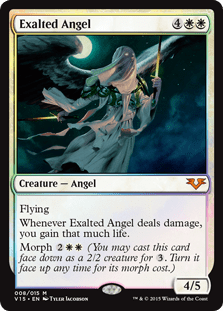

The mechanic was widely liked by fans because it led to some great Limited gameplay, and some pretty bad gameplay thanks to Zombie Cutthroat being in every deck that was lucky enough to open it. It also provided some sweet options for Constructed with Exalted Angel and the Kai Budde invitational card, Voidmage Prodigy.
We’ve seen morph brought back as one of the main mechanics in the Time Spiral block, where we also saw the first instances of noncreature cards with morph (Zoetic Cavern and Lumithread Field if you were curious). WotC brought it back again as the key mechanic for Khans of Tarkir where they evolved it into manifest and megamorph, but I’ll talk a bit more about those later. We finally saw it return more recently when Wizards released Time Spiral Remastered in early 2021, showcasing the best of what the Time Spiral block had to offer.
The Balance Problem
Morph has proven itself to be a really sweet and fun mechanic for players, but it’s a nightmare for R&D to balance. 2/2 creatures are really easy to deal with and they don’t do so well in combat, something which has gotten more prevalent in recent sets as 2/2s for three have become majorly outclassed by even the vanilla creatures in modern sets.
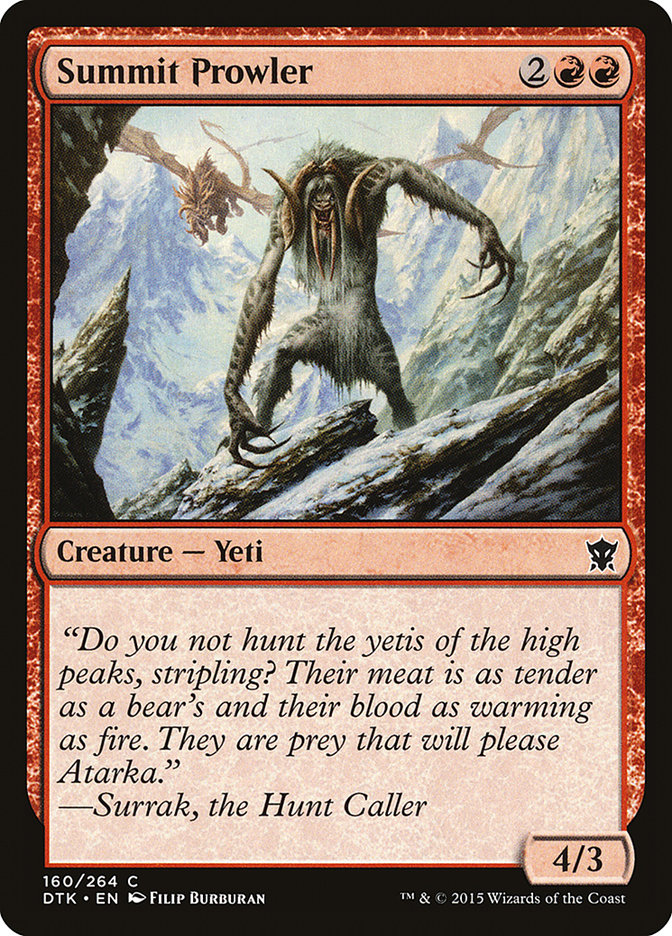
Summit Prowler was a really strong common and a high pick in Draft despite only being a weak vanilla creature back in Khans. It lined up very favorably against morphed creatures and that mattered a lot in gameplay.
Morph was a bit of a mess the first couple of times we saw it. Wizards was faced with the challenge of making it feel more fair for players since they often got caught out by facing down (pun absolutely intended) multiple morphed creatures and brawling the wrong one.
Cards like Zombie Cutthroat and Gathan Raiders made it impossible for players to block or attack into any morph creature for fear of losing the combat without a fight. WotC fixed this issue with a nice solution in Khans of Tarkir. There are 35 cards with morph in the set and every single one costs at least five mana to turn face-up as long as doing so would make it big enough to eat an opposing morph creature in combat. If the face-up creature had less than 2 power or toughness, then its morph cost could be cheaper.
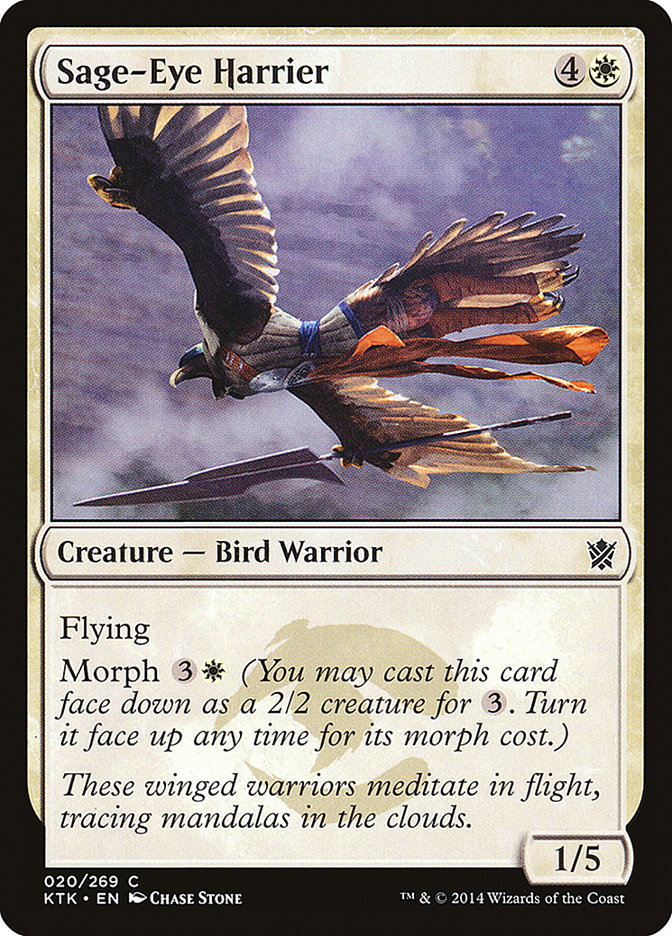
This meant that you knew you were safe to attack into a board of your opponent’s morphed creatures with your morphed creature as long as they didn’t have five mana available. The worst that could happen is they block and trade, or maybe turn over a Sage-Eye Harrier and you get a stalemate.
This solution made morph one of the best Limited mechanics we’d ever seen, and also made Khans of Tarkir one of the all-time best Limited formats in Magic’s history. Not only was the mechanic very much fixed from how it was used before, but it also helped your deck fix its colors. Khans was a 3-color format which is still a tough ask for any Limited set, so most decks focused on two colors and splashed the third.

3-color morph creatures were incredibly easy to splash because they could be cast face down for three mana of any color. Your Temur () deck that was primarily Simic () was happy to play as many Snowhorn Riders as possible, and they still worked as 2/2s that traded if you never found your red mana.
Morph in the Now
Morph is certainly not an evergreen keyword since it’s very difficult to fit into a set. Even just one or two cards using the mechanic would be difficult to make work. Morph ultimately only works particularly well if the set it’s in isn’t hostile to Gray Ogres. We see all sorts of common 2/3 creatures for three mana, and even 3/3s are becoming more and more common. Morph doesn’t play well in any of these sets.
It would need to be woven into the fabric of the set to make a successful comeback, with the average creature size brought down a bit to help make 2/2s for three more inviting. It’s possible it could also be reinvigorated by printing a new mechanic where the base 2/2 creature is a little bigger or cheaper to make it stronger.
Whatever the case, if we do see morph again in a future set it won’t be a flash-in-the-pan appearance. It’ll be a big release that makes a big impact on whatever set it’s printed in.
When Can You Morph?
Like I said before, morph has two parts to it: casting the card as a face-down creature and paying its morph cost to turn it face-up. As you might have already guessed, casting a creature face-down works the same as casting any other creature spell and can only be done at sorcery speed.
But turning the morph creature face-up can be done at any time you want. This enables you to make tricky plays like turning it face-up in the middle of combat or in response to removal, giving you more options for when you want to use it.
Is Morph a Spell?
Casting your morph cards face-down counts as casting a creature spell and it can be interacted with in the same way as any other creature spell can be, regardless of whether the actual card is a creature or not. So they can be countered by cards like Counterspell and Essence Scatter and also trigger abilities like Animar, Soul of Elements and Beast Whisperer.
But turning your morphed creature face-up doesn’t count as casting a spell or activating an ability; it’s treated as a “special action.” Special actions are things you can do that don’t use the stack.
For example, playing a land from your hand on your turn is a special action. Special actions can’t be interacted with or responded to in any way. Once you’ve decided to turn your creature face-up, you pay your cost and it’s face-up with no opportunity for your opponent to stop you.
Can You Morph Tapped Creatures?
You can morph a creature regardless of what state it’s currently in. But morphing it doesn’t cause it to become tapped or untapped unless there’s another effect that does so.
You can attack with your face-down creature, wait for a block, and then morph it face-up after blocks have been declared. It’s still attacking and will still deal combat damage, which is particularly nice if it’s something like Hystrodon or Silent Specter.
How Does Morph Work with the Stack?
Morphing a creature is counted as a special action, which doesn’t use the stack at all. But you do need to have priority in order to use a special action. It’s also worth noting that this does not pass priority to your opponent, so you can still do something immediately after doing morphing a creature.
Can You Respond to Morph?
Once your opponent has taken the action to morph their creature face-up, you have no choice but to let it happen. It doesn’t use the stack or give either player the opportunity to respond to it.
But you can then respond to any triggered abilities the morphed creature may have before your opponent can continue casting spells. And if this is done during combat then you always get priority to do something to save your creature or win the combat.
Is Morph an Activated Ability?
Morphing your creature face-up isn’t an activated ability.
Can you Stifle a Morph?
Morphing a creature face-up is a special action you can take. Cards like Stifle or Disallow can’t counter it since it’s not an activated or triggered ability.
Does Flipping a Morph Count as Entering the Battlefield?
Morphing a creature face-up does not cause it to leave or re-enter the battlefield. It just changed states, from face-down to face-up. This is the same as when a double-faced card is transformed or when a permanent goes from being tapped to untapped.
So morphing a creature doesn’t trigger any ETB abilities like Impact Tremors or Pandemonium.
Does a Morph Creature Have Summoning Sickness?
Every permanent you play has summoning sickness as long as you didn’t control it when you last had an untap step. When you cast a morph creature face-down, it has summoning sickness and can’t attack or use activated abilities that use the tap symbol just like all other creatures.
What About After you Morph/Unmorph a Creature?
If you morph a creature face-up it doesn’t gain summoning sickness again. As long as you controlled it when you began your turn you can attack with it.
What Happens When You Flicker a Morph Creature?
When you cast a morph creature face-down it’s only considered to be face-down while it’s on the stack or the battlefield. If it then moves to a different zone, like the graveyard or exile, it loses its face-down state and is face-up again.
Flickering or blinking a face-down morph creature reverts it back to being face-up, and then it enters the battlefield face-up. This means that you can effectively use your flicker spell to turn your creature face-up without paying its morph cost.
Can Morph Counter Split Second?
Split second is a very odd mechanic, and one that many players misinterpret. It reads: “As long as this spell is on the stack, players can’t cast spells or activate abilities that aren’t mana abilities.”
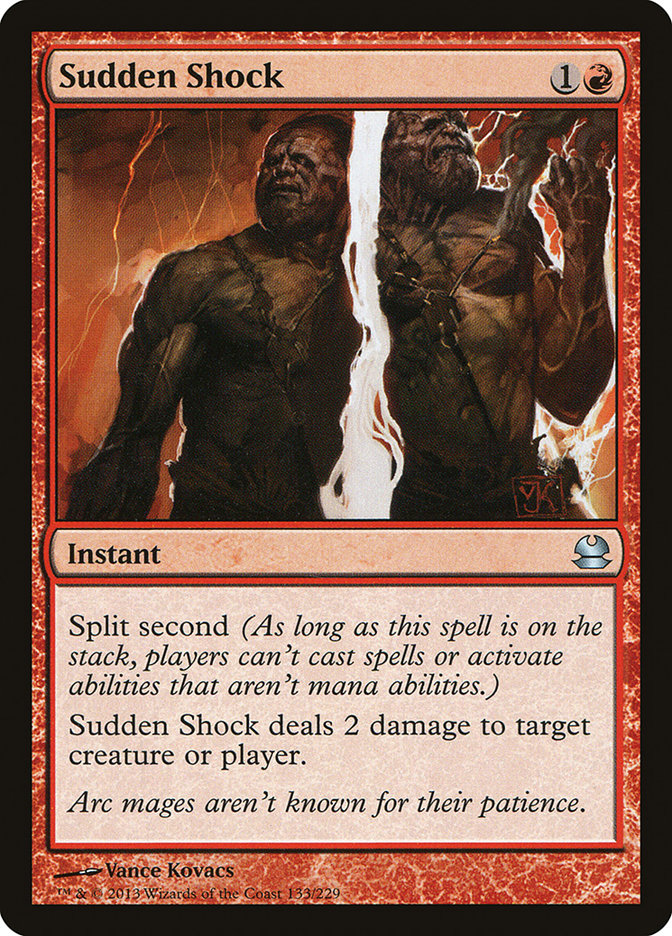
If this was able to stop a player from morphing a creature then Sudden Shock would be a great answer to morph creatures. But split second isn’t just an ability that says that the spell can’t be interacted with or stopped, it specifically mentions casting spells and activating abilities. Morphing a creature is a special action and it doesn’t use the stack, so can still morph creatures while a split second card is on the stack.
Are Morph Cards Tokens?
No, morph cards aren’t tokens. WotC included a morph token in Khans of Tarkir booster packs to help players represent a face-down creature on the battlefield, and to remind players that those creatures are 2/2s. But this was just to help clarify how the mechanic worked.
Do Morph Creatures have a Name?
Face-down morph creatures don’t have a name. This is important to note when looking at cards like Maelstrom Pulse.
Morph vs. Manifest
When morph was brought back in Khans of Tarkir, Wizards did so with the intention of modifying it for each set in the block. The block’s story centered around Sarkhan Vol who came back to his home plane of Tarkir to find that the dragons that once inhabited the world had all died out. He learned time travel magic from the shamans of the Temur clan and traveled back in time to the point in time that changed Tarkir’s history: a climactic battle between Ugin, the Spirit Dragon and Nicol Bolas. Morph was replaced by the manifest mechanic in Fate Reforged to mechanically represent this.
Manifest allowed any card to become a face-down 2/2 creature. But instead of appearing on cards the way that morph did, spells and abilities instruct you to manifest a card, often from the top of your library. If that card is a creature card, you can turn it face-up for its mana cost in the same way that you’d morph a morph creature.
Manifest proved to be a very powerful mechanic, and was much more powerful than morph for Constructed. Cards like Whisperwood Elemental and Mastery of the Unseen were Standard mainstays the entire time they were legal in the format.
Morph vs. Megamorph
To close out the Khans of Tarkir block, Dragons of Tarkir saw Sarkhan Vol time traveling back to present day to find himself in an alternate timeline where the dragons never died out and the plane is ruled by clans that each worship and revere one of the five Elder Dragons. Morph was brought back over manifest to highlight this in the mechanics, but this time it became megamorph.
Megamorph is functionally identical to morph in every way. You still cast the cards as face-down 2/2 creatures for three mana, and you can turn them face-up for their megamorph costs as a special action. The only difference is that if you turn a creature face-up with megamorph, they get a +1/+1 counter. That’s really all there is to it.
What is Spellmorph?
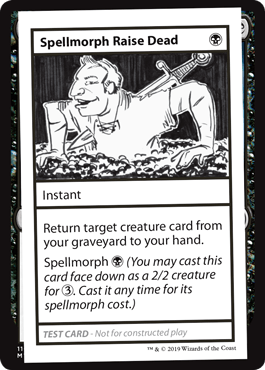
Spellmorph is a theoretical mechanic that was shown off in the Mystery Booster playtest cards. Spellmorph Raise Dead shows us a card that’s just a Raise Dead that can be cast face-down like a morph creature, but instead of turning it face-up, the spellmorph mechanic lets you cast the card from the battlefield by paying its spellmorph cost.
There are no rules on this kind of mechanic, but it seems like an interesting application of morph that we could very easily see in a future set.
Is Morph Good?
Morph has proven itself to be a great mechanic over the years. It gives you ways to make fun bluffing plays (more on that here) and is entirely combat-focused, both elements that improve the Limited experience. Constructed is a very different story, so a mechanic centered around casting 2/2s for three is an extremely tough sell, but there have been a few highlights.
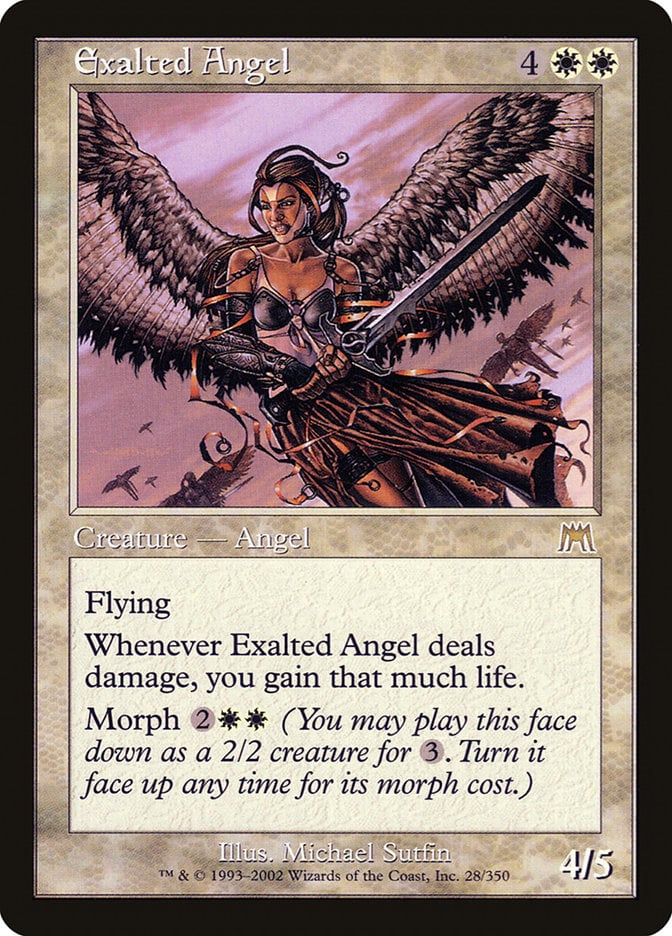
The community was raving about Baneslayer Angel when I started playing Magic back in 2009. This angel basically usurped Exalted Angel as the classic anti-aggro control finisher that was still seeing play in Legacy and Cube even seven years after its first printing.
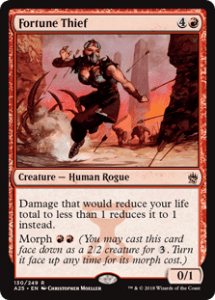
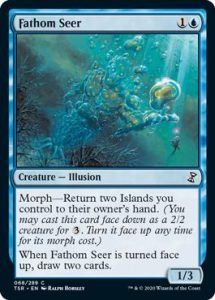
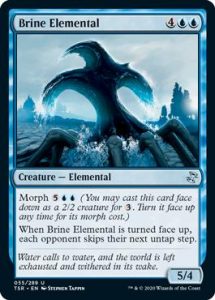
I heard stories of cards like Fortune Thief, Fathom Seer, and Brine Elemental that all saw a bunch of play before my time.
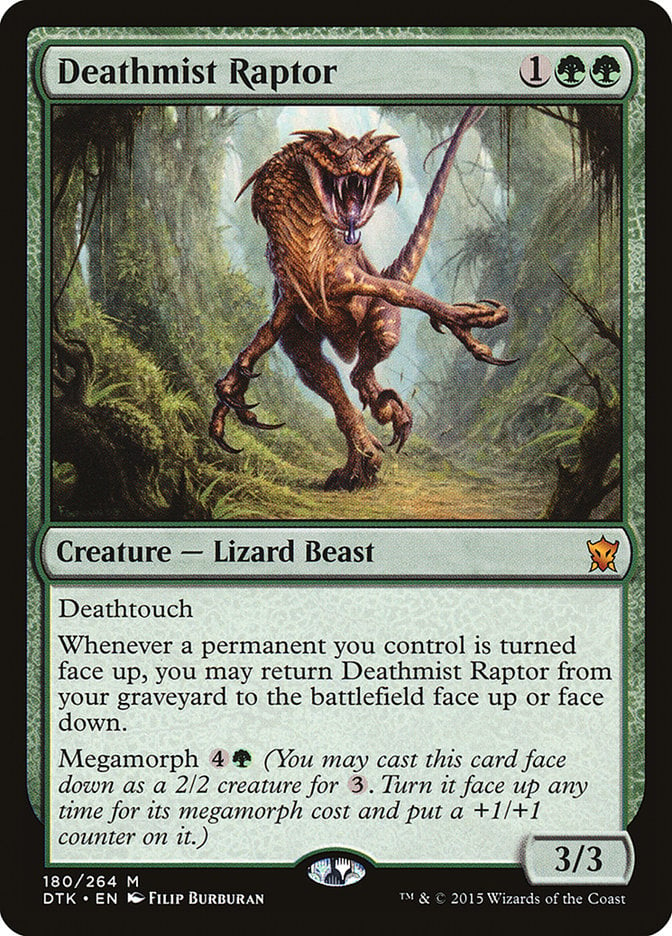
But there’s never really been a morph deck to the best of my knowledge. Each of these cards was just powerful on their own, regardless of the mechanic itself. This all changed with the printing of Deathmist Raptor in Dragons of Tarkir, a card that was powerful enough to encourage dedicated morph decks that included all three iterations of the mechanic. Recurring Deathmist over and over again proved to be a dominant strategy in Standard for many months.
Best Morph Cards
Exalted Angel

Any morph creature that can be turned face-up for four or less is worth considering since you can curve into it perfectly. Exalted Angel was a great control finisher in Legacy and Extended for many years.
You can start swinging with what’s essentially a 4-power flying lifelinker as early as turn 4. Most aggro decks could never beat a play like that if you back it up with counterspells.
Zombie Cutthroat
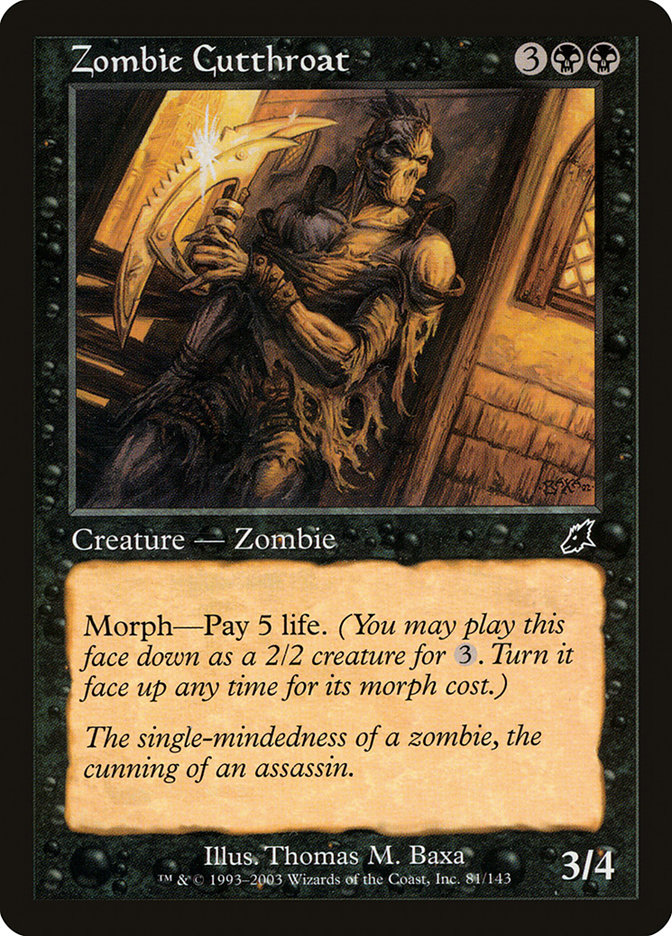
Paying five life sounds like a really tough cost to pay. Without gaining any life, how many of these can you realistically play in one game?
But Zombie Cutthroat‘s payoff is absolutely absurd. In a Limited environment where everyone is playing morph creatures and the average size of most creatures is about a 2/2 anyway, having a creature that morphs into a 3/4 without paying any mana whenever you feel like it ends up being a huge blowout. It also means that Cutthroat is actually just colorless since every deck is happy to jam it in and blow out their opponents.
The same is also true of Gathan Raiders from Future Sight.
Voidmage Prodigy
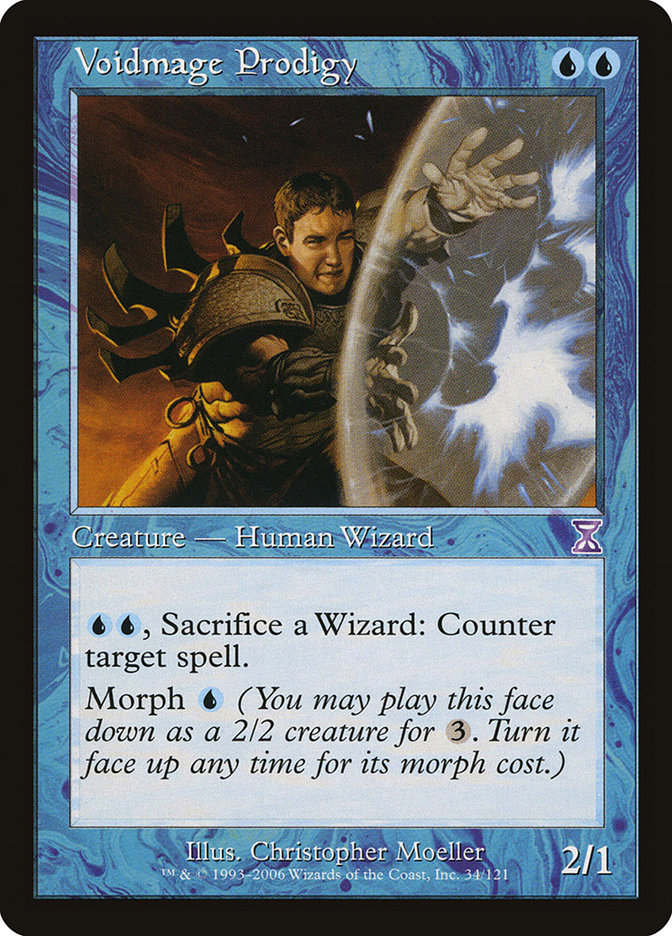
I have to give a quick shoutout to the invitational card of the greatest Magic player of all time, Kai Budde. Voidmage Prodigy is exactly what pro Magic players of the late 90s would have wanted: a counterspell with a creature attached. It’s a fun design and it’s not every day you get to design your own card and put your face on it.
Brine Elemental + Vesuvan Shapeshifter
The block Constructed and Standard deck affectionately known as “Pickles” used Brine Elemental and Vesuvan Shapeshifter to effectively lock your opponent out of the game.
Elemental skips your opponent’s untap step when it’s turned face-up, but seven mana is a lot and you only get one shot at it. But Shapeshifter can turn face-up as a copy of the Elemental for just two mana, which basically works like Time Walk in most situations. Then Shapeshifter turns itself back face-down on your upkeep and you can do it all over again, effectively locking your opponent from ever getting another untap step.
Pickles was a fan-favorite combo/control deck from the mid-to-late 2000s that put up some impressive numbers, and these are the cards that brought it together.
Rattleclaw Mystic
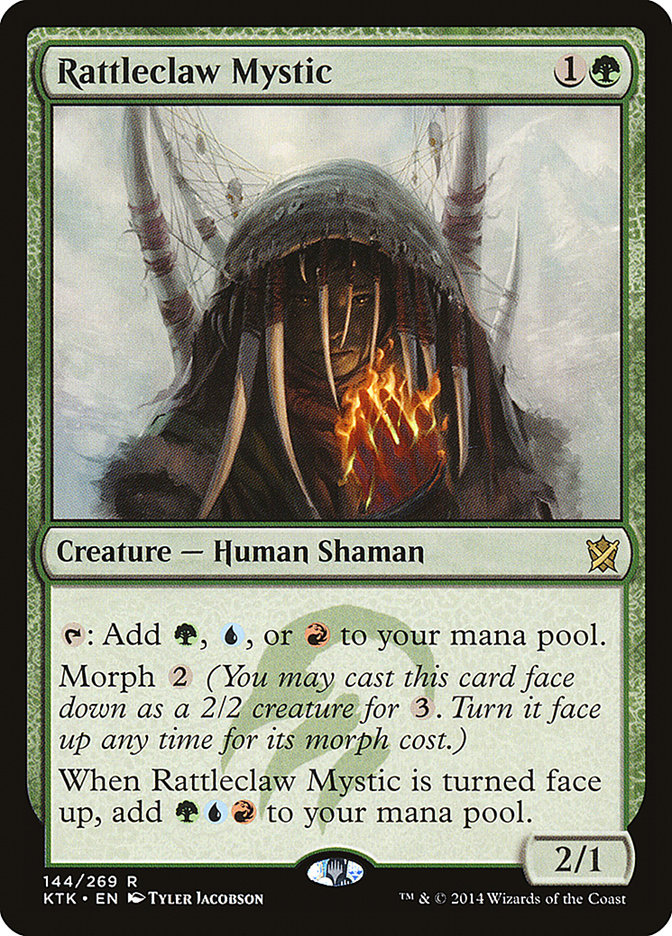
Probably my personal favorite morph card ever printed, Rattleclaw Mystic was an exceptional mana dork back in its day. It works just fine as a 2-drop that can cast you a 4-drop a turn earlier, but the biggest plays usually came from waiting a bit and casting it face-down, which was also possible on turn 2 thanks to Elvish Mystic.
Paying two mana to turn it face-up the next turn spotted you three mana straight away, and it could also tap for a fourth. It’s like you just cast Seething Song, accelerating you to a 6-mana creature as early as turn 3. I’m a sucker for great ramp cards and this is one of my favorite dorks of all time.
Deathmist Raptor

Deathmist Raptor is the card that made it all possible. Often combined with the best morph and manifest cards in the format like Den Protector, Whisperwood Elemental, Mastery of the Unseen, and Stratus Dancer, decks based around the annoying raptors were seen everywhere in Standard around 2015.
The format ended up being dominated by some of the most powerful midrange decks it’s ever known, and the winners were usually the players who found the best way to stay alive for as long as possible. There were a lot of different flavors of Deathmist decks available in the format since they were the closest thing we’d ever seen to a dedicated morph deck in Standard.
Kadena, Slinking Sorcerer

Last but not least is a card for all you Commander players. Kadena, Slinking Sorcerer headlined the 2019 EDH morph precon, packed full of morph’s greatest hits and a few new ones like Kadena's Silencer and Gift of Doom.
Kadena is quite powerful too, gifting you a free morph spell each turn and giving you card advantage whenever you turn your creatures face-up. This card is a great place to start if you like this mechanic, and it's in just the right colors to play all of the best cards that it has to offer.
Morph Decklists
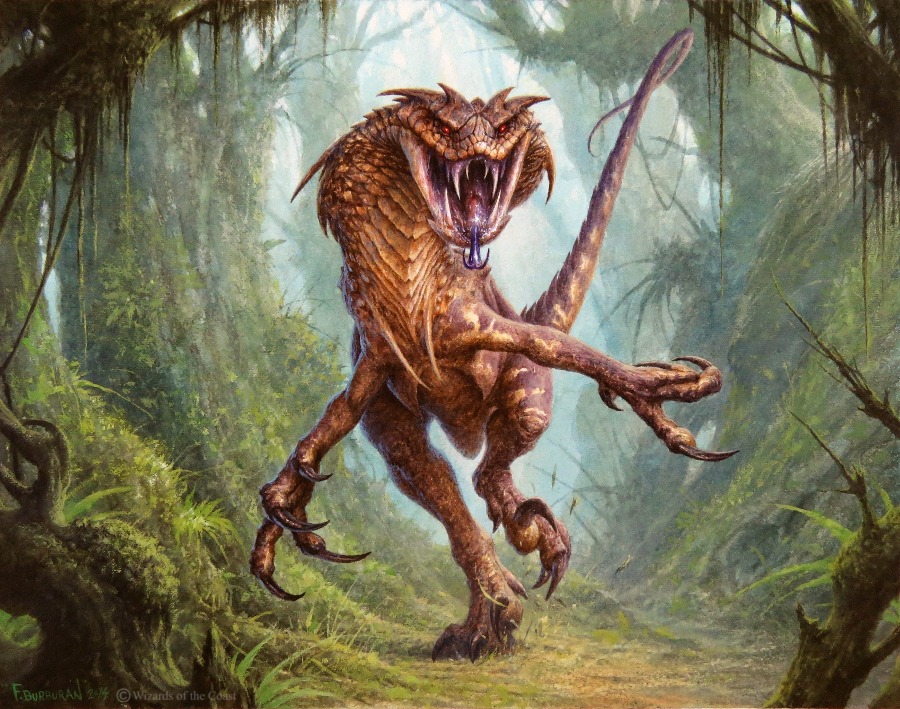
Deathmist Raptor | Illustration by Filip Burburan
I played a lot of Magic around 2015 so I was right there in the thick of it when Deathmist Raptor was around and wreaking havoc. I was judging a lot of events but I managed to sneak in one Grand Prix where I got my best ever finish, reaching Top 16 with a record of 12-2-1 playing Gruul Devotion.
I was still live for Top 8 going into round 14, but sadly lost to a great player named Julien Henry who played, you guessed it, a Deathmist Raptor deck. In the end we both unfortunately fell short of Top 8. I won my last round but Julien lost his, and the size of the tournament meant that it just didn’t convert to a top finish even with our good records.
I’ve got both of our decklists from the 2015 Grand Prix London for you today, each featuring a decent number of morph and manifest cards.
Selesnya Midrange by Julien Henry
Planeswalker (4)
Ajani, Mentor of Heroes x3
Elspeth, Sun's Champion
Creature (25)
Elvish Mystic x4
Hangarback Walker x2
Fleecemane Lion x4
Hidden Dragonslayer x2
Den Protector x4
Deathmist Raptor x4
Courser of Kruphix x2
Nissa, Vastwood Seer x3
Instant (6)
Valorous Stance x2
Dromoka's Command x4
Land (25)
Temple of Plenty x4
Windswept Heath x4
Blossoming Sands
Rogue's Passage
Forest x9
Plains x6
Sideboard (15)
Hangarback Walker x2
Tragic Arrogance x2
Evolutionary Leap x2
Back to Nature
Unravel the Aether x2
Valorous Stance
Hushwing Gryff x2
Plummet
Glare of Heresy x2
Gruul Devotion Ramp by Andrew Quinn
Planeswalker (3)
Creature (31)
Elvish Mystic x4
Sylvan Caryatid x4
Rattleclaw Mystic x4
Reclamation Sage
Courser of Kruphix x4
Polukranos, World Eater x3
Whisperwood Elemental x4
Dragonlord Atarka x4
Genesis Hydra x3
Sorcery (2)
Land (24)
Forest x10
Mountain
Wooded Foothills x4
Temple of Abandon x4
Rogue's Passage
Haven of the Spirit Dragon
Nykthos, Shrine to Nyx x3
Sideboard (15)
Arbor Colossus
Nissa, Worldwaker x2
Seismic Rupture x3
Unravel the Aether x2
Back to Nature
Nylea's Disciple x4
Ugin, the Spirit Dragon x2
Wrap Up
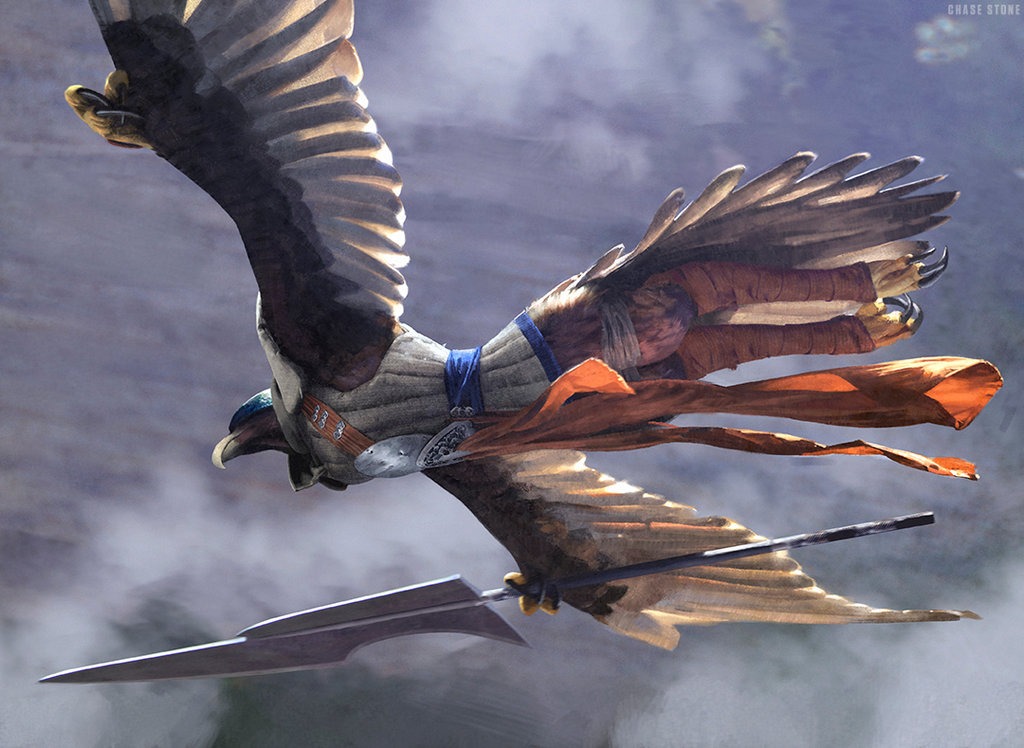
Sage-Eye Harrier | Illustration by Chase Stone
That’s all there is to say about this mechanic. What are your favorite morph cards? Would you like to see the mechanic make a return in a future set? Let me know and share your experiences with the mechanic in the comments down below.
Until next time, stay safe and have fun!
Follow Draftsim for awesome articles and set updates: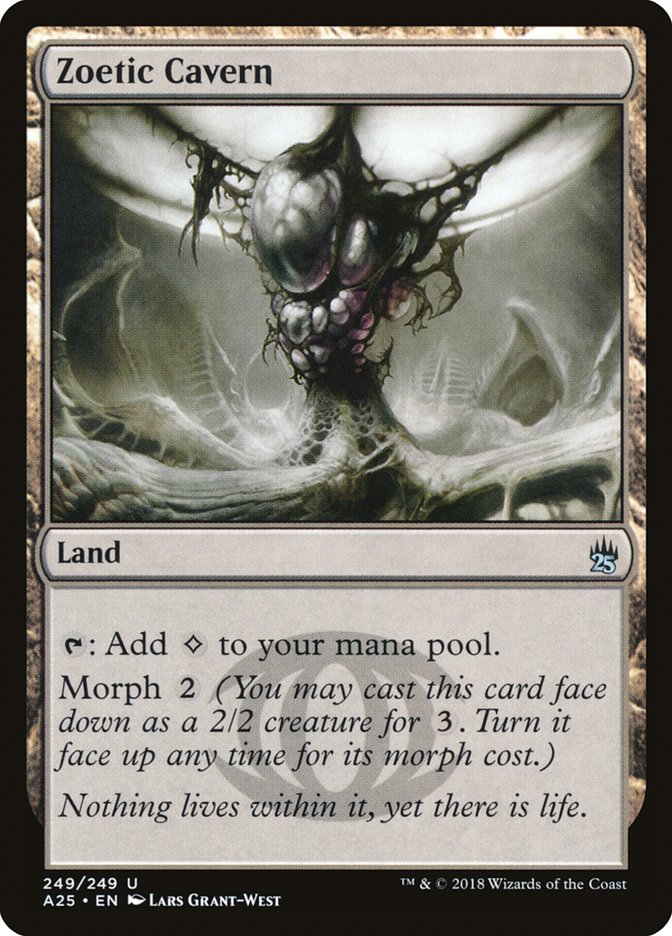
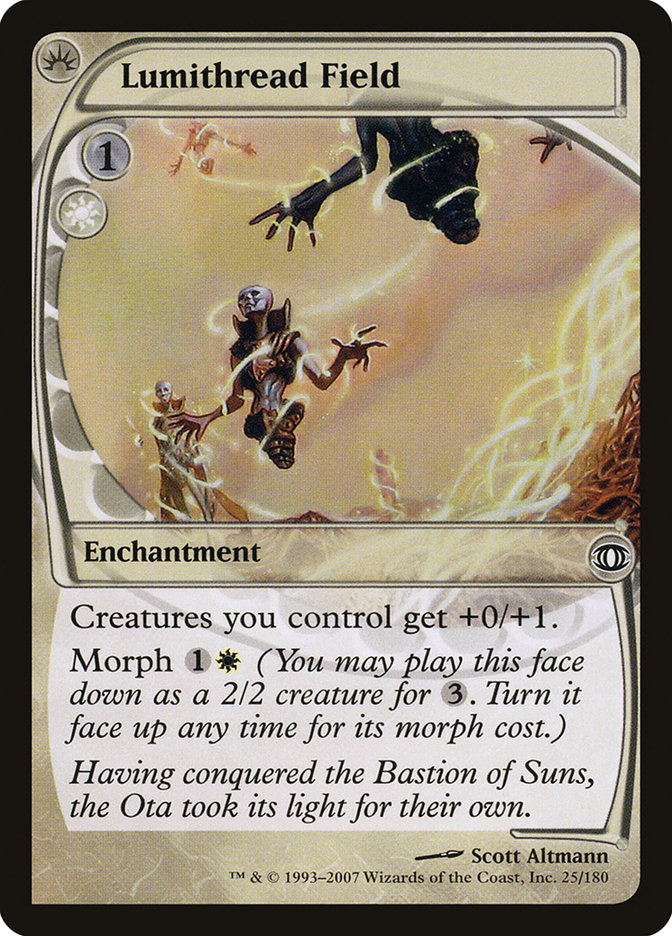
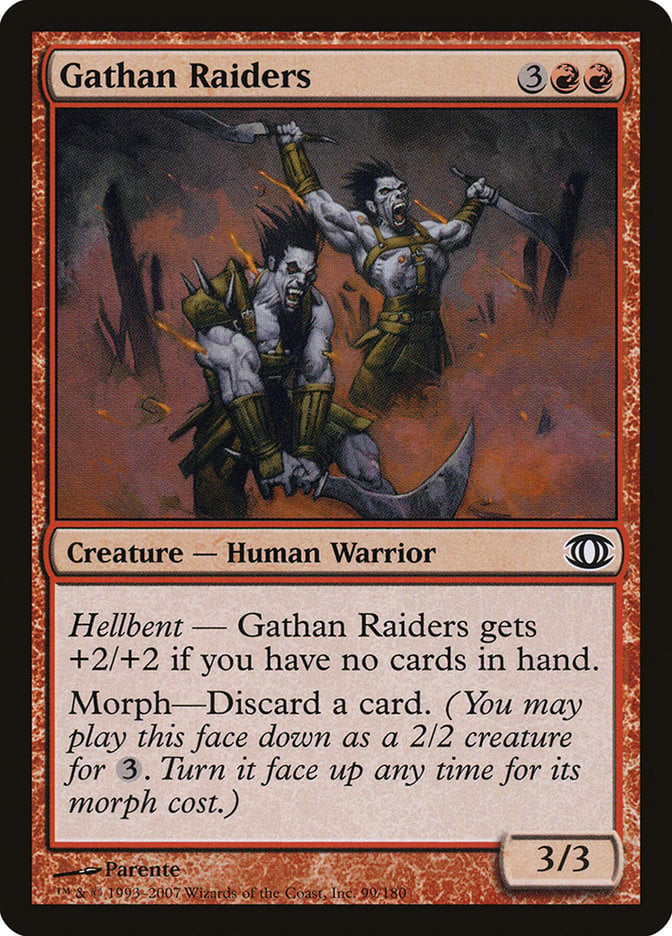
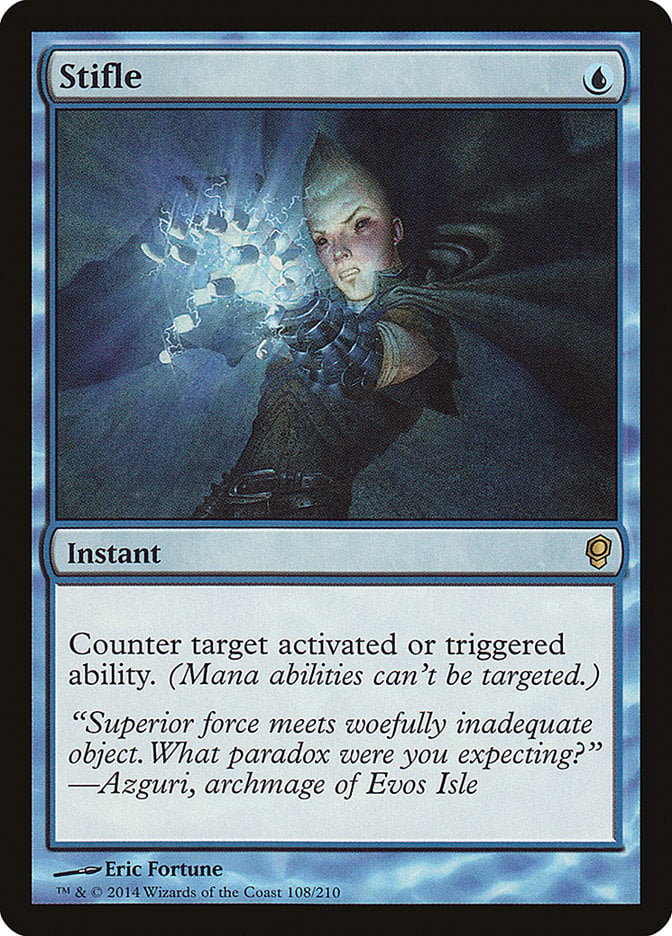
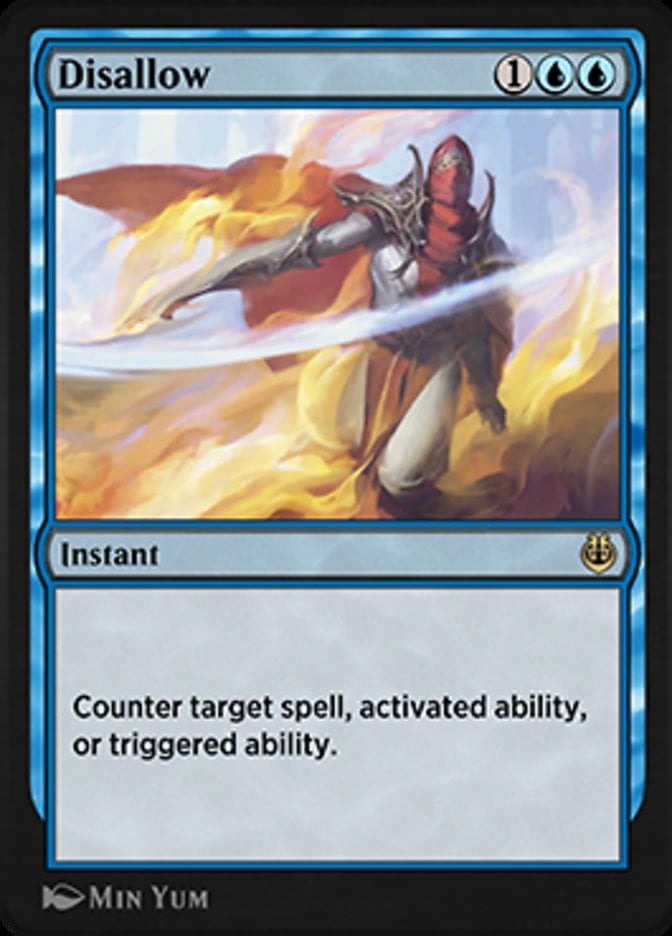
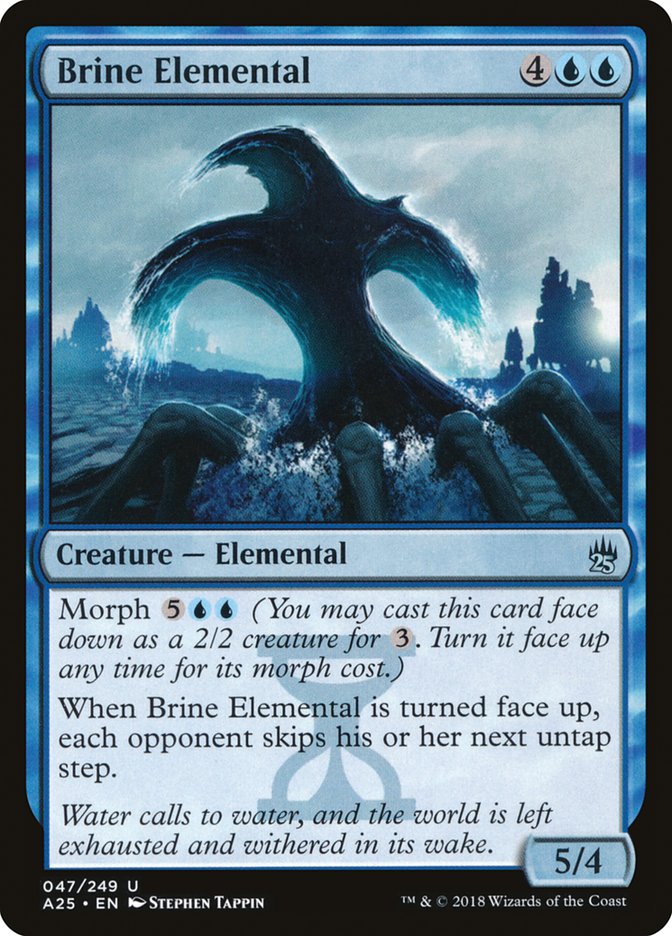
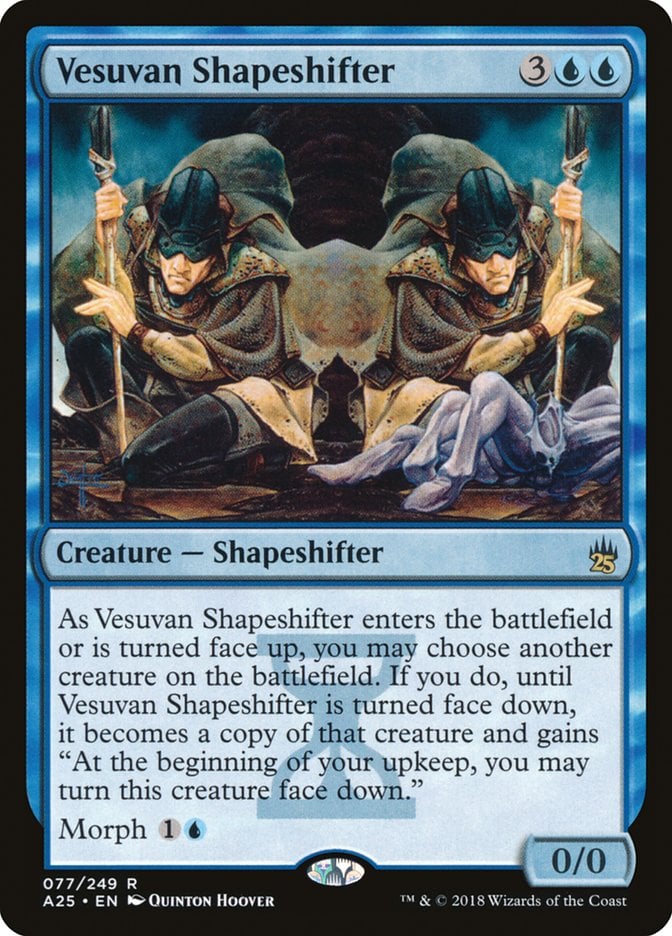

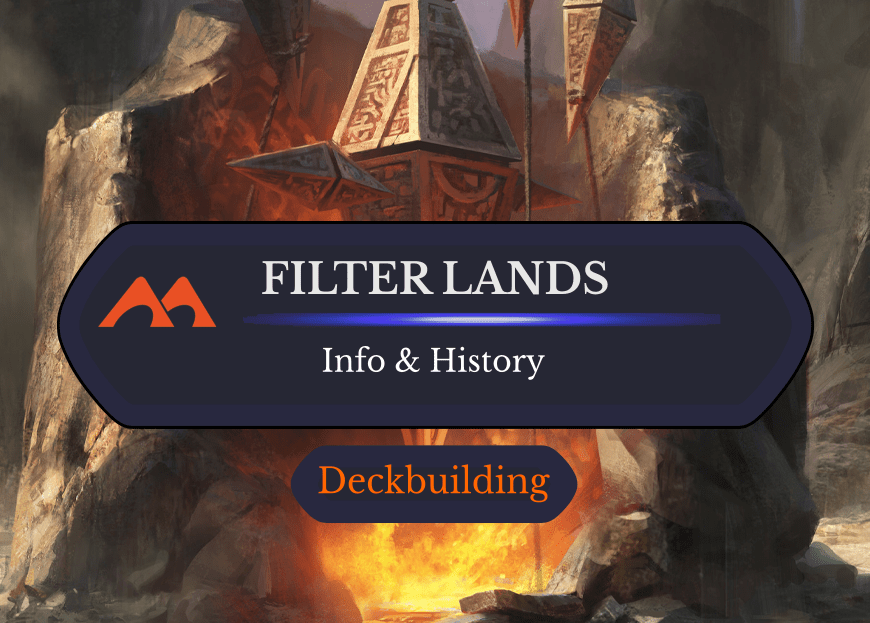
Add Comment